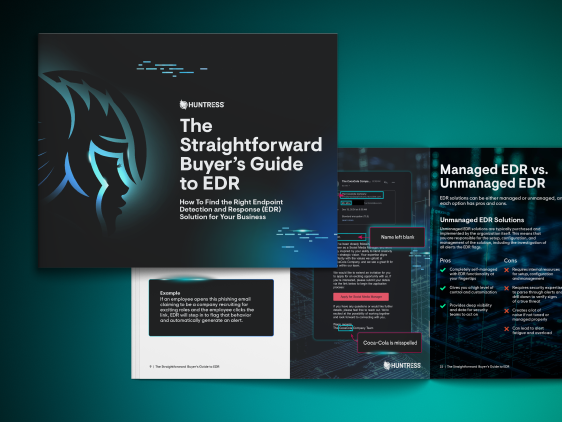Explore the Huntress Endpoint Detection & Response Guide
EDR might seem complicated, but it’s become a cornerstone of modern cybersecurity. We’ve pulled together these resources to help you master EDR—no matter your starting point.
If you’re looking for an easy way to get up to speed or simply want to learn more about EDR, you’re in the right place. This guide gives you a curated view of EDR to discover how it works, how to choose the right solution, and where Huntress fits into the mix.
Here’s what you can expect from this guide:
- A blueprint for everyone: Whether you’re just learning the ropes or digging into advanced threat hunting, these articles tackle every stage of the journey.
- Practical advice you can apply: From definitions and core features to evaluations and solution comparisons, you’ll find real-world examples and insights that can shape your security strategy.
- Clarity on the “why”: EDR isn’t just another piece of software; it’s a proactive tool that combines detection, investigation, and response in a single, holistic approach. We’ll show you why that matters, how it saves time and money, and some major potential headaches.
We created this guide because we believe endpoint security shouldn’t be a luxury. Our team of threat hunters, analysts, and cybersecurity experts lives and breathes EDR, and we want to share our knowledge so you can get your defenses where they need to be.
By exploring these topics, you’ll walk away equipped to make informed decisions and adopt strategies that protect your endpoints more effectively. And if you’re looking to see how Huntress specifically fits into your security puzzle, we’ve got you covered there, too.
























